Vickers Wellington, Co. Kerry, December 1943
Following the earlier tragedies of July and August 1943, with
the crashes of Sunderland G-AGES and Sunderland DD848, the night
of December 20th 1943 would reveal yet another crashed aircraft
on the slopes of Slieveglass above the village of Cloghane on
the Dingle Penninsula in County Kerry.
23:30 hours on the night of the 20th, is the time reported in
the Irish Army reports at which the aircraft crashed.
There appears to be no mention of who reported the crash, be
they local residents of the area or members of the Brandon Head
Look Out Post. The hand written Unit Journal of Office of
Chief of Staff, General HQ contains some of the earliest reports
from that night.
The same journal noted at 19:30 on the 21st or 22nd December,
that Gardai at Tralee were reporting that 2000 rounds of .303
ammunition had been recovered from the site along with other
items such a dingy, a flare pistol, parachutes and a box of
rations. At that time, the names and serial numbers of the
crew were also transmitted by the Gardai. An Irish Air
Corps memo to G2 Branch dated 6th January 1944 mentioned that it
was their opinion the aircraft had been on an operational
mission due to the large amounts of ammunition carried, both
ball and tracer.
The aircraft was captured in at least one photo, found
published in the 2015 Polish language book "Polskie skrzydla nad
Irlandia" by Łukasz Gredys and Piotr Sikora.

Coffins were obtained from an undertaker, Thomas B Kennedy in
Tralee. The bodies of the six men were taken by Irish
military convoy to the customs post at Middleton, Co. Armagh and
handed over there to British authorities at 1830 hrs on December
22nd. They were accompanied by Captain Birthisle of the
Irish Army G2 branch.
The Operations Record book for 304 Squadron records the
following on 27 December 1943: The
funeral took place at the Roman Catholic Cemetery of
MILLTOWN, BELFAST, of F/S ADAMOWICZ, SGT S CZERNIAWSKY, SGT
N H KUFLIK, SGT P KOWALEWICZ, SGT W PIETRZAK and SGT T
LUGOWSKI. The officiating chaplain was the Rev. Father
KELLY, and the Chaplain of Royal Air Force Station LONG
KESH, the Rev. W. T. BOYD, attended. The funeral
party, with an officer in charge, consisted of firing and
escort parties. The bearers were provided by personnel
of No. 303 (Polish) Squadron, Royal Air Force Station,
BALLYHALBERT., who were represented by three officers.
Wreaths were provided by Royal Air Force station, Long Kesh,
on behalf of No. 305 (Polish) Squadron, and there was also
one from the Commanding Officer, Officers and Airmen, Long
Kesh, and one from Headquarters, Royal Air Force, Northern
Ireland.
The following June, Belfast news papers reported on the burial of Sgt Kuflik in Carnmoney Jewish Cemetery, though it is not mentioned in the newspaper articles that he had died some six months prior.
On the 29th December, Major J P O'Connnell of G2 Branch,
Southern Command filed a memo to Dublin Headquarters which
contained a report sent to the Army by the Gardai on the
22nd. It read: "I beg to
report that a British Aircraft crashed at Slieveglas
Mountain, Cloghane, County Kerry, at 11.20 p.m. on
20/12/43. I give hereunder the following
particulars in accordance with the terms of commissioners
Circular C.M.2217/40of 19/5/'43: -
(1) 20th December, 1943, at 11.20 p.m. at Slieveglas
Mountain. Cloghane, County Kerry.
(2) British Royal Air Force machine -
Wellington Bomber - two engined land 'Plane H.F.208.
(3) There were six (6) members of a
crew on board and all were killed in the crash. All
the members were of Polish nationality."
The report goes on
to name the sixe men and described the conditions of the
bodies before concluding with:
"There were no civilian casualties and
as far as can be ascertained no damage was done to
private property. The aircraft was completely
wrecked in the crash.
Sergeant M. Duffy, 8230, and
Gardai from Cloghane arrived at the scene at 12.45 a.m.
on 21.12.43 and took charge of the wreckage, etc, until
it was handed over to the military at 3 a.m. on
21/12/43. The coroner was informed of the
incident and he decided that no inquest will be
held. The six (6) bodies were removed from the
scene of the crash at 9 p.m. on 21/12/43. by the
military for interment at Cloghane, Ferbane, County
Limerick.
The deaths have been registered with the Local Registrar, evidence of identification being given by Lieutenant Hennessy of Ballymullen Barracks, Tralee, in the presence of Sergt. M. Duffy, 8230, Cloghane Station.
I arrived at the scene at about 12.30
a.m. on 21/12/'43
Members of the L.D.F., L.S.F. and Red Cross were also
present.
The coroner for the district is Dr.
D.T. Sheehan, Milltown, County Kerry.
The bodies were identified from discs
which were found in the pockets."
F/Sgt Klemens ADAMOWICZ + P780537
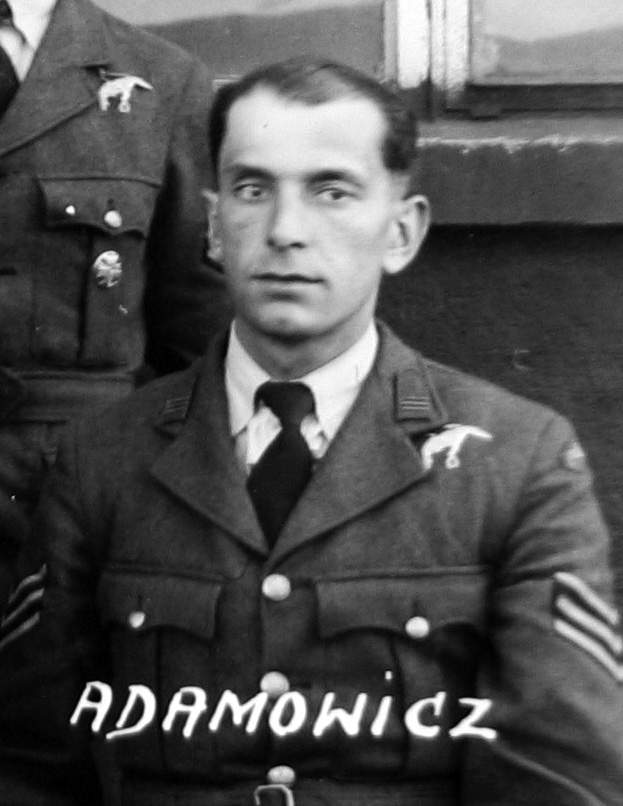 Refer to his bio on the listakrzystka.pl
website.
Refer to his bio on the listakrzystka.pl
website.
Sgt Stanislaw CZERNIAWSKI + P794362
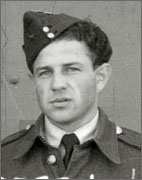 Refer to his bio on the listakrzystka.pl
website.
Refer to his bio on the listakrzystka.pl
website.
Sgt Naftali Hirsz Pawel KUFLIK + P794712
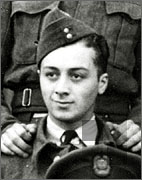 Refer to his bio on the listakrzystka.pl
website.
Refer to his bio on the listakrzystka.pl
website.
Sgt Pavel KOWALEWICZ + P703968
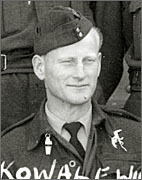 Refer to his bio on the listakrzystka.pl
website.
Refer to his bio on the listakrzystka.pl
website.
Sgt Kazimierz ŁUGOWSKI + P703438
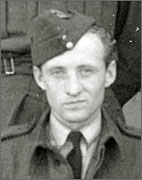 Refer to his bio on the listakrzystka.pl
website.
Refer to his bio on the listakrzystka.pl
website.
Sgt Wincenty PIETRZAK + P782657
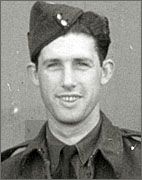 Refer to his bio on the listakrzystka.pl
website.
Refer to his bio on the listakrzystka.pl
website.
On the 17th January 1944, Major J P O'Connnell filed the
following report, forwarding on a report he had received from
the Southern Command Ordnance Officer: "Captain Pringle visited the scene of the
aircraft crash at Mount Brandon on 22nd December, 1943, and
he found four aerial depth charges, 3 damaged and one burnt
out, two damaged incendiary bombs and a quantity of
unserviceable or burnt out aircraft flare floats.
He destroyed all the above mentioned material at the scene of the crash by detonating the aerial depth charges"
It is of interest to find in the Irish Army G2 file that in
early Feb 1944, an example of an RAF escape package recovered
from the wreckage had been sent to Army Headquarters for
review. Each pack contained 2000 French Francs, two small
maps on rubber fabric, a small compass and two waterproof cans
from two different kits.
A long running set of communications also related to the loss
of an Army felling axe on the night of December 20th,
1943. This axe had been taken by members of the platoon of
15th Battalion to the crash site but was lost in the dark.
It was to be August 1945 before the matter was finally closed
and the offending axe struck from the inventory.
In 2008, during a hike to the crash site of Sunderland G-AGES,
local farmer Sean Fitzgerald brought me to the locations of the
wreckage of Wellington HF208. Photos taken at that time in
July 2008, are shown below.
This section of very distinctive metallic structure lies on a
stream down hill from the crash site. It is very
distinctly from a Vickers Wellington, displaying the distinctive
geodetic criss-cross method of construction.
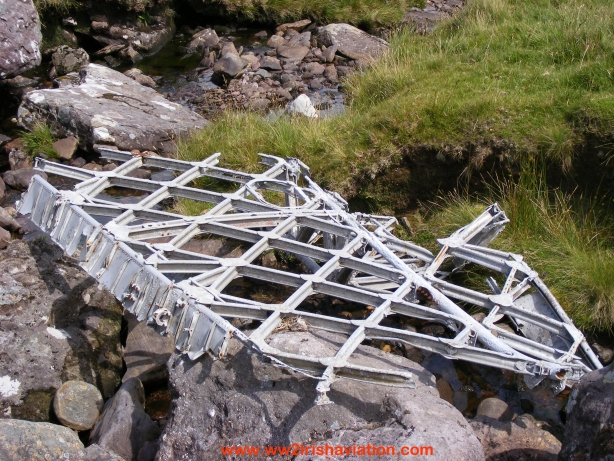
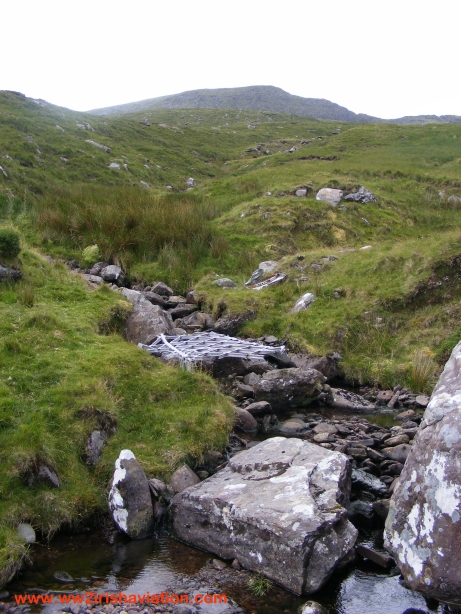
At or near the crash site can be found this large section of
wing structure and attached landing gear. This seems to be
the right hand landing gear leg, with the inner portion of the
engine nacelle structure. The long tubes are the main wing
spar. This consisted on the center section of the wing of
double tubes upper and lower, joined by diagonal members.
This arrangement ended on the outer edge of the engine
nacelles. This would indicate that the wreckage is the
right hand side, with the tubes continuing off to the right of
the image where they used to pass through the fuselage.
This wreckage has in the inter-meaning years been rotated
towards teh camera, so that in 2022, the leg is pointing upwards
while the large metal panel apepars to have collapsed somewhat.
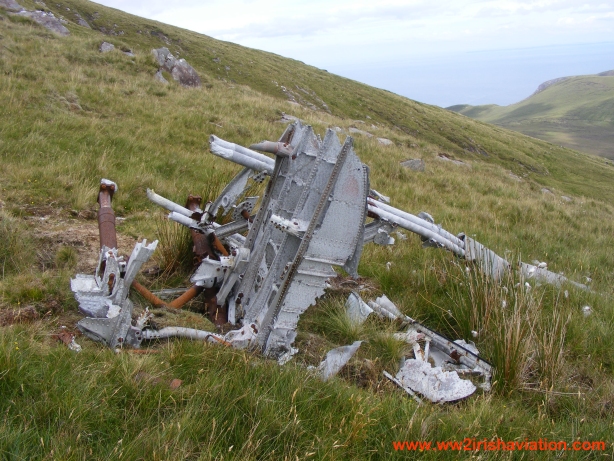
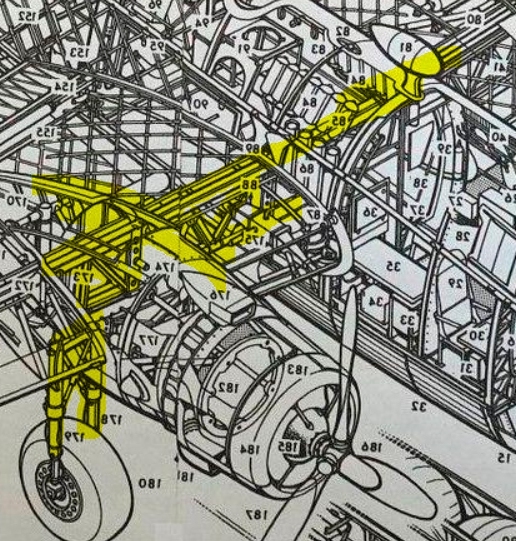
In this view below, one can see the landing year and nacelle
described above, and behind that one of the aircraft's Hercules
engines.
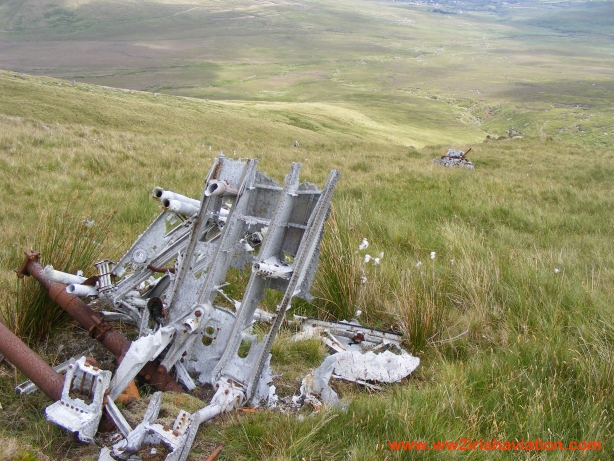
In 2022, a Polish man living in Ireland, Andrzej Danielak,
produced a set of wonderful memorial items and placed near to
the wreckage and hiking paths on the mountain.
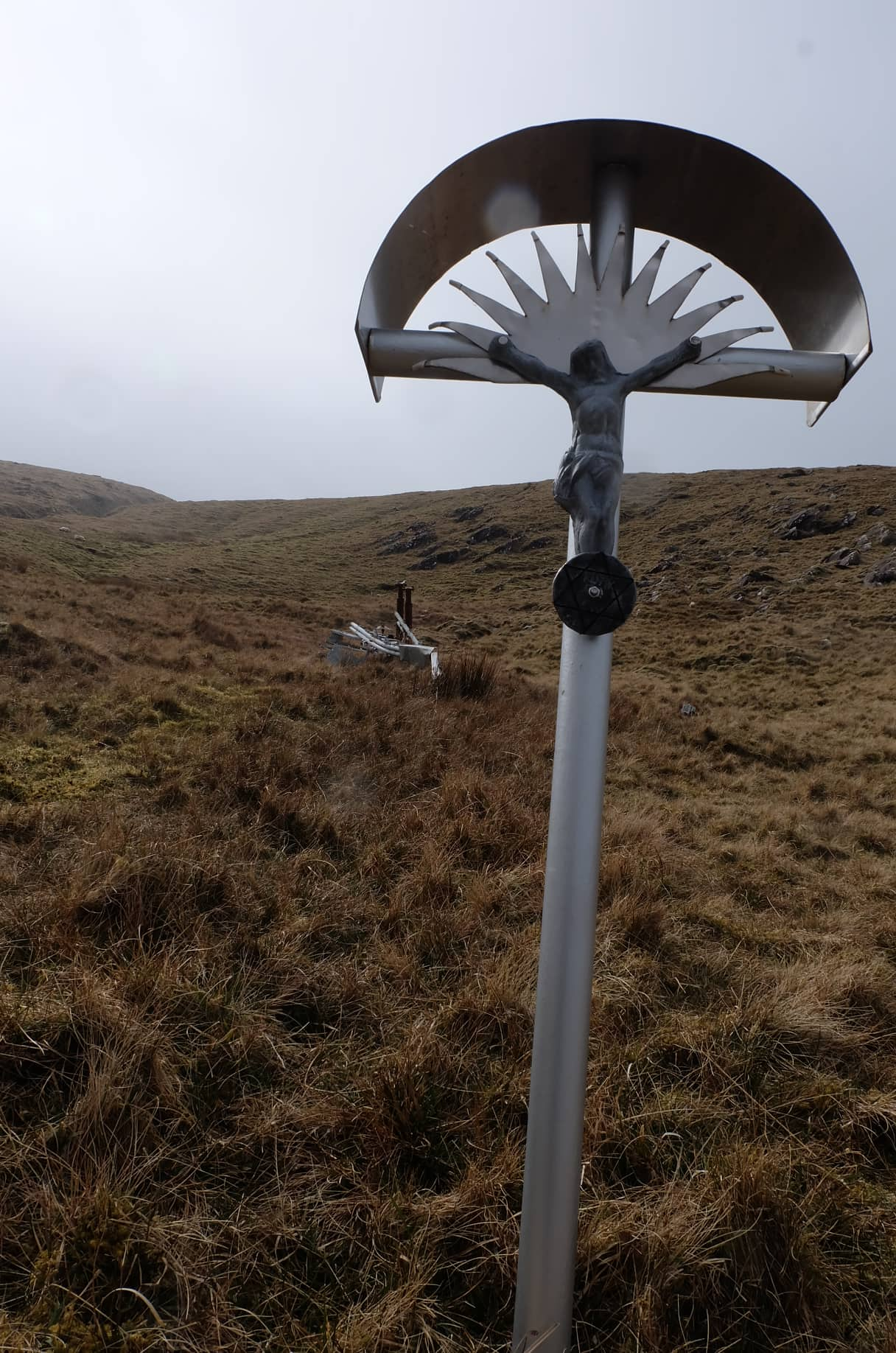
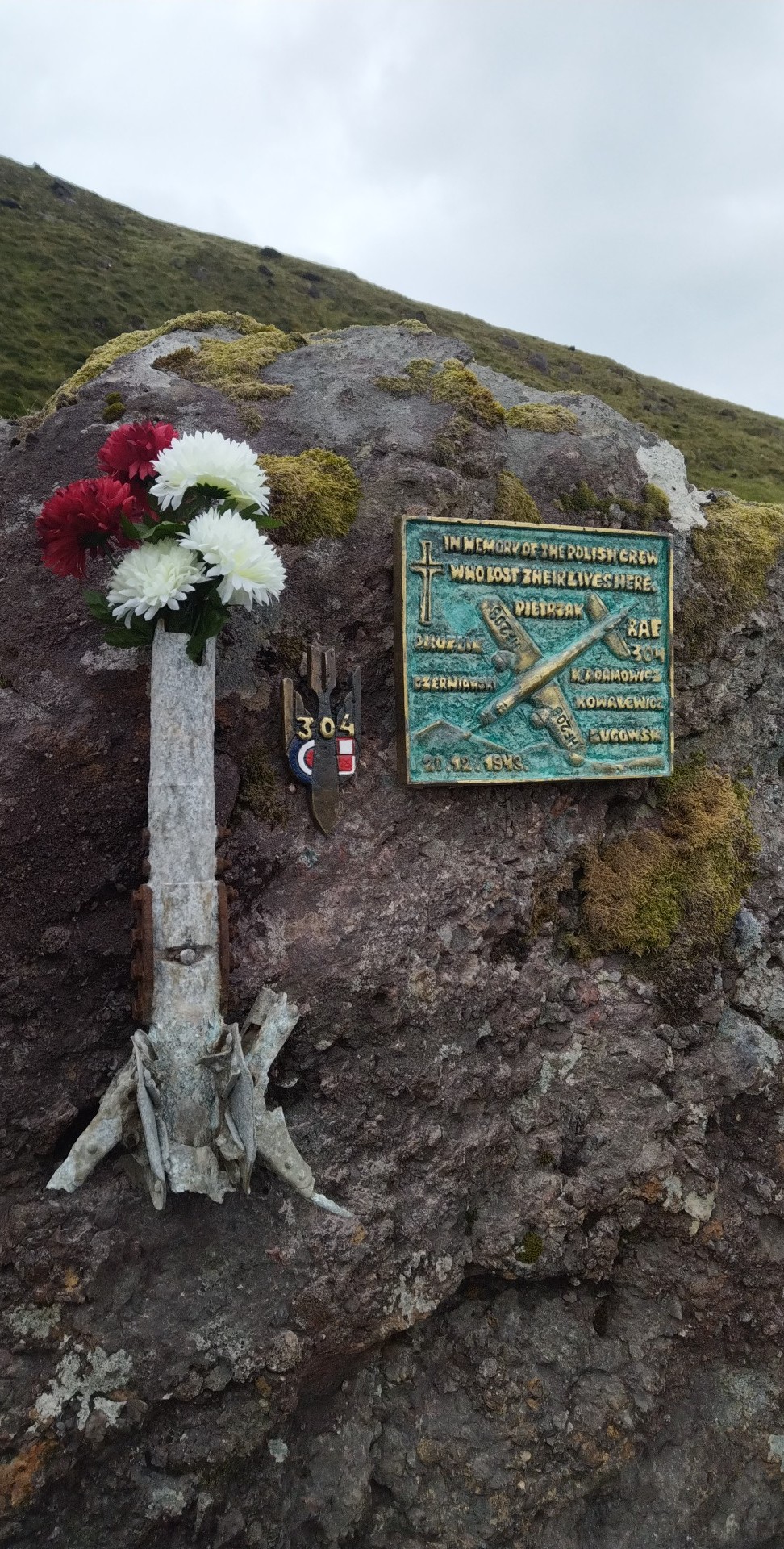
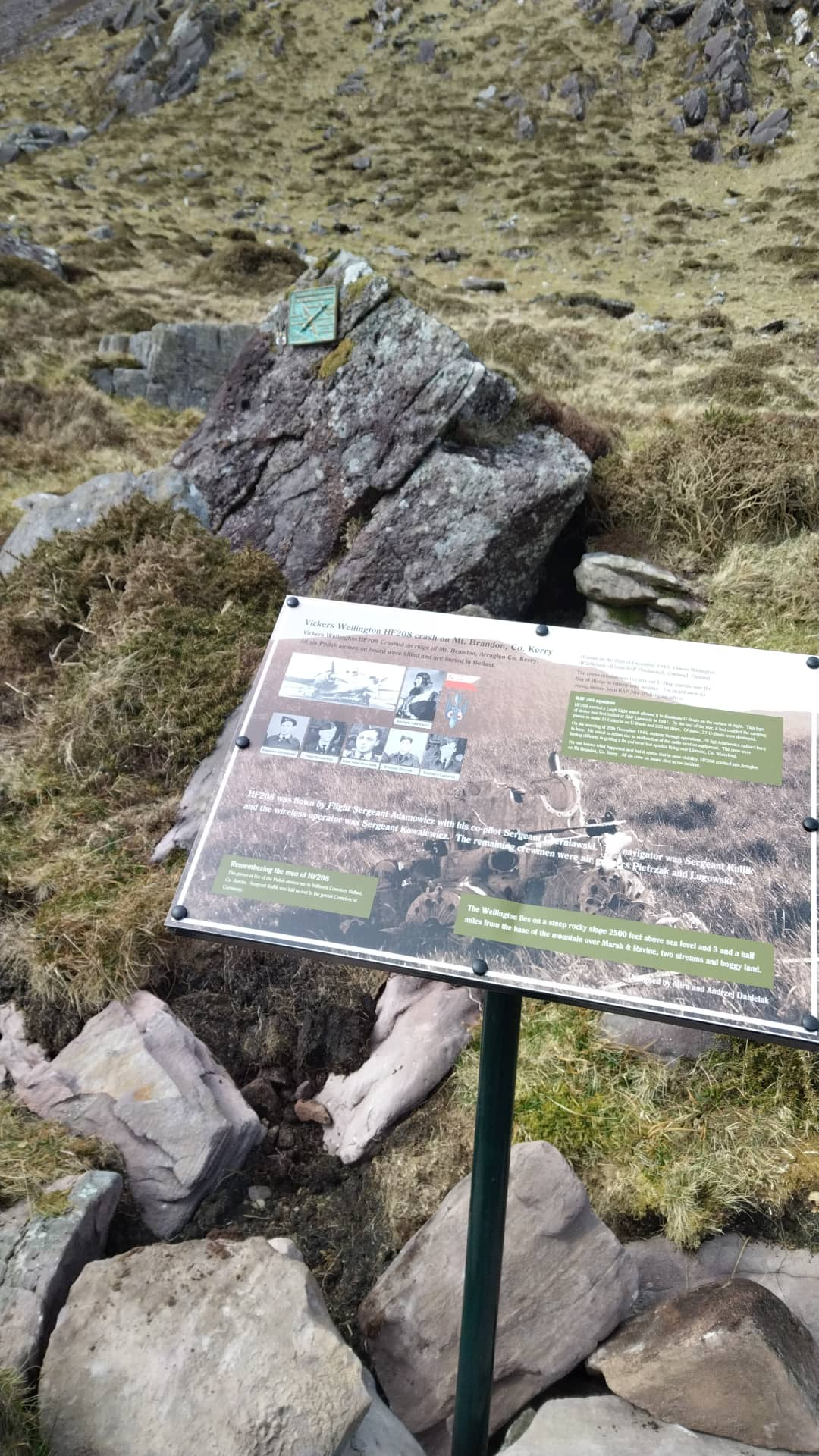
Compiled in 2022 by Dennis Burke: Sources: Irish
Military Archives files, G2/X/1265 and SI/316. 304
Squadron ORB, TNA.
